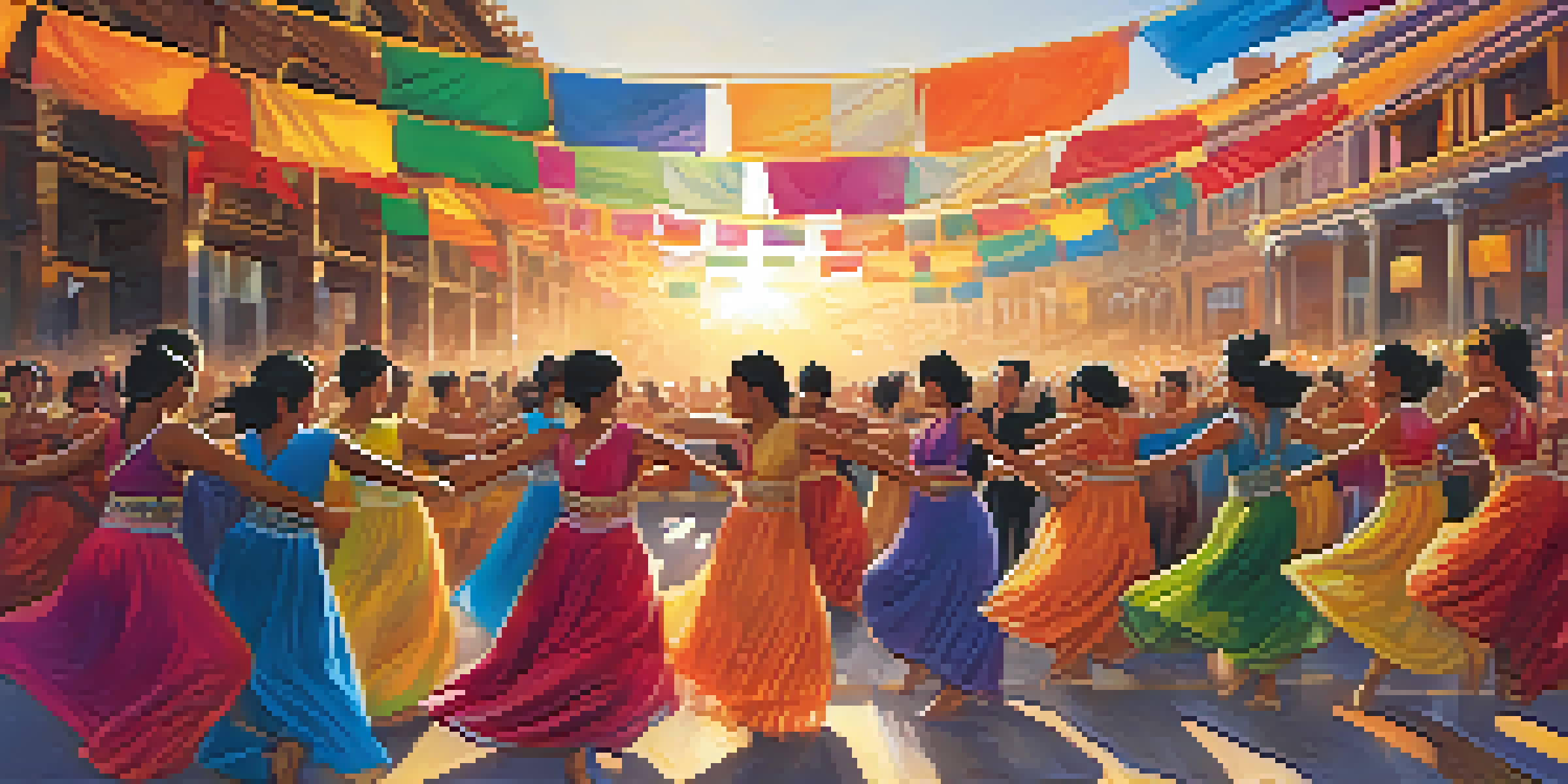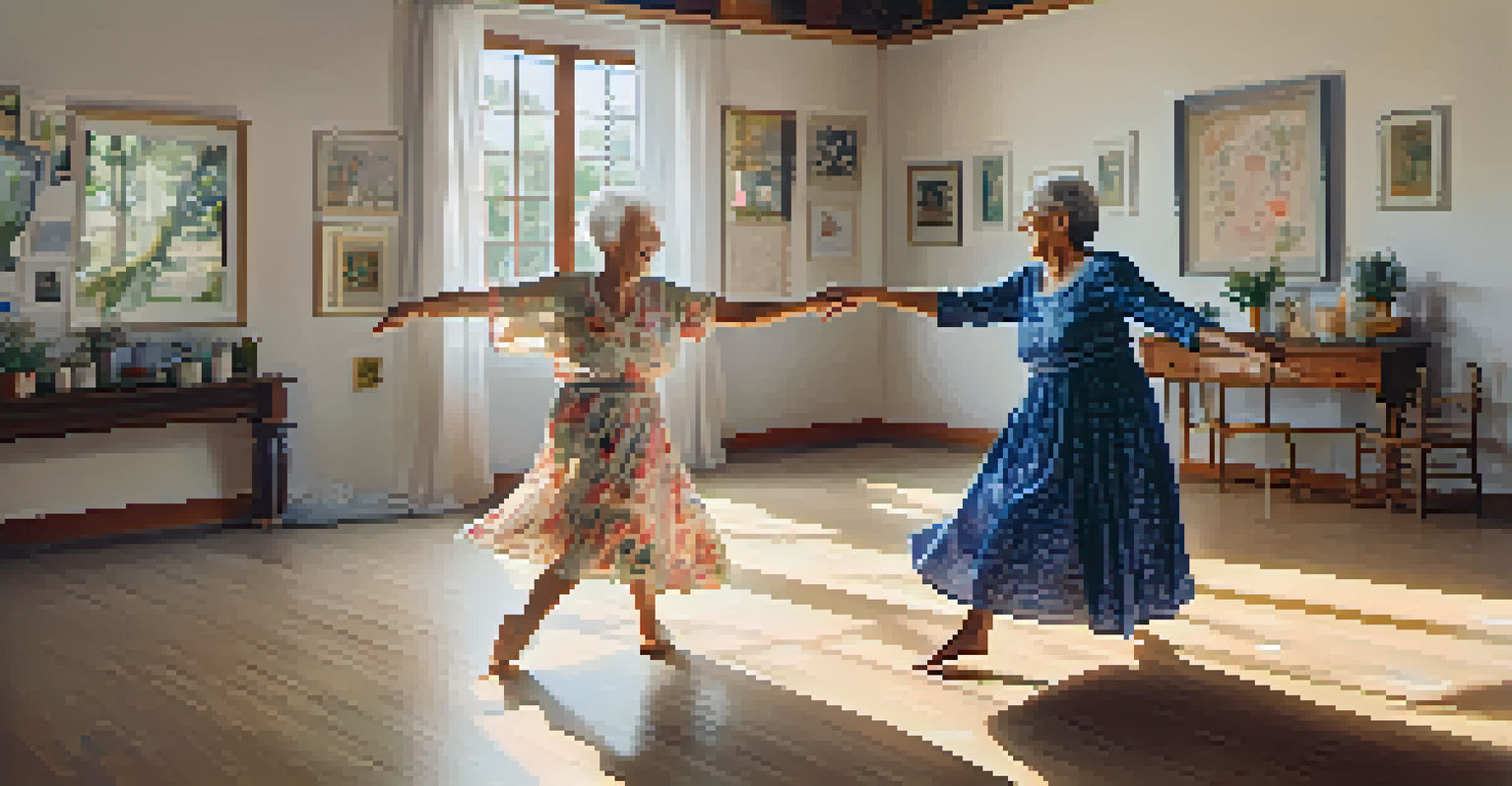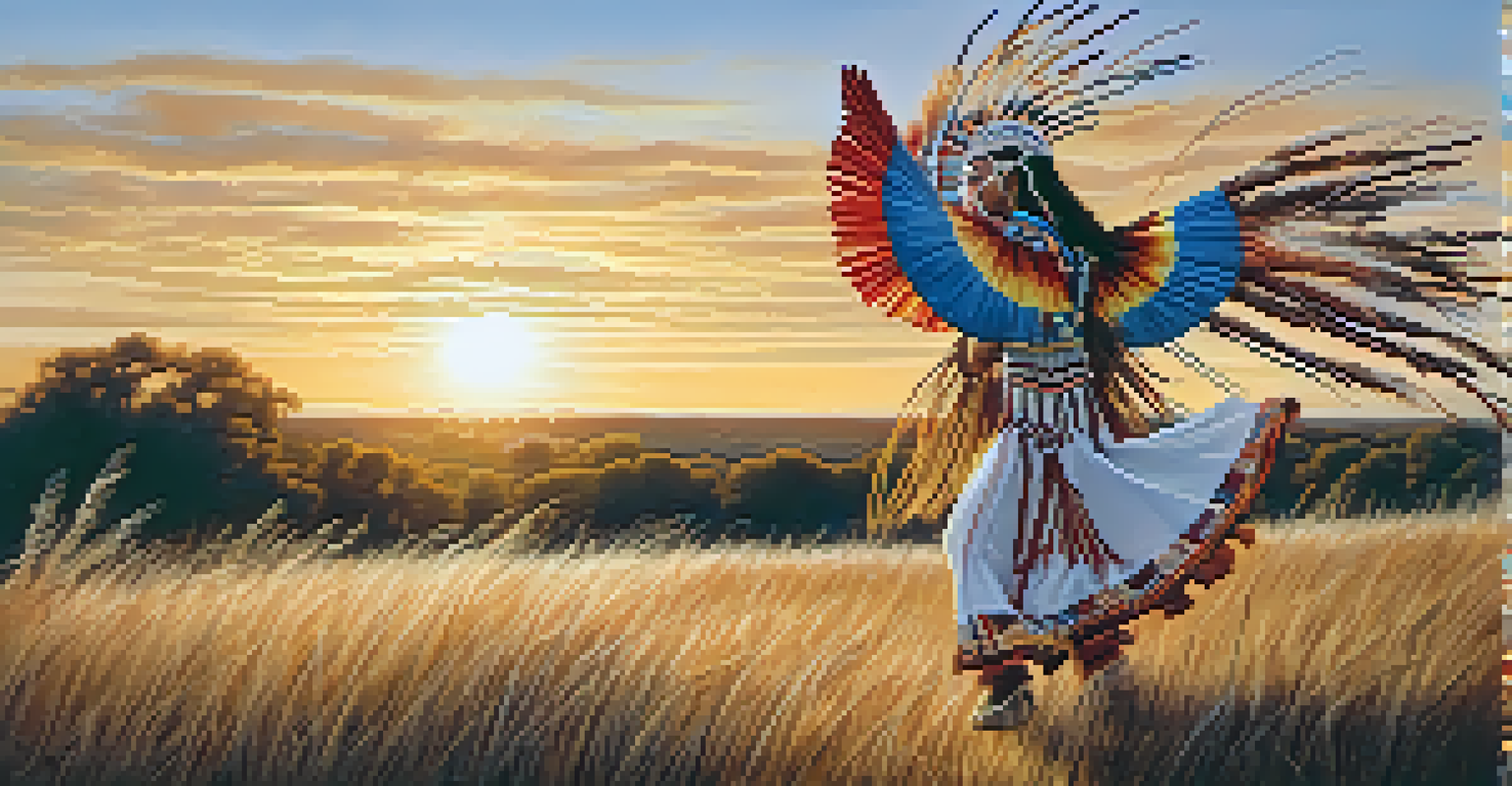Dance Festivals: Bridging Generations and Cultures

The Universal Language of Dance: Connecting Cultures
Dance is often described as a universal language, transcending barriers and connecting people from diverse backgrounds. At festivals around the world, you can see this in action as dancers share their unique styles and traditions. From the lively rhythms of African dance to the elegant lines of ballet, each movement tells a story that resonates with audiences, regardless of their origin.
Dance is the hidden language of the soul.
These festivals provide an opportunity for cultural exchange, where participants learn from one another. Imagine a young dancer from a small town learning traditional flamenco steps from an experienced performer visiting from Spain. This not only enriches the dancer's experience but also fosters appreciation for different cultures and histories.
Moreover, this blending of styles often leads to innovative dance forms that reflect a fusion of traditions. When dancers come together, they create something new and exciting, showcasing how dance can evolve while still honoring its roots.
Dance Festivals: A Family Affair
Dance festivals often attract attendees of all ages, making them the perfect family-friendly events. Parents can introduce their children to various dance styles, encouraging a love for movement from a young age. Whether it’s a toddler twirling to upbeat music or grandparents enjoying line dancing, these gatherings offer something for everyone.

Many festivals also include workshops tailored for different age groups, allowing families to participate together. Imagine a grandmother and her granddaughter learning a traditional folk dance side by side, sharing laughs and creating memories that will last a lifetime. These experiences strengthen family bonds while promoting a healthy lifestyle through dance.
Dance Connects Cultures Globally
Dance serves as a universal language, fostering cultural exchange and appreciation at festivals around the world.
Additionally, witnessing the joy of dance across generations helps foster a sense of community. People often come together to celebrate their shared love for dance, creating connections that extend beyond the festival itself.
The Role of Community in Dance Festivals
Dance festivals often serve as a gathering point for local communities, drawing in participants and spectators alike. They not only showcase local talent but also provide a platform for cultural pride. Communities rally together to support these events, which can enhance local economies and boost tourism.
Dance is the joy of movement and the heart of life.
In many cases, local dancers and choreographers are given the chance to shine, showcasing their skills in front of a broader audience. This communal support fosters a sense of belonging and encourages individuals to express themselves through dance. When community members come together for a common purpose, it cultivates strong ties that can last for years.
Moreover, these festivals can highlight social issues and movements, using dance as a tool for advocacy. For instance, festivals may promote awareness around mental health or environmental conservation, showing how art can inspire change and unify people for a cause.
Dance as a Form of Storytelling
Dance has long been used as a powerful storytelling medium, with each style conveying narratives unique to its culture. At festivals, audiences are treated to performances that encapsulate age-old tales, myths, and legends through movement and music. This storytelling aspect of dance connects the past with the present, allowing younger generations to understand and appreciate their heritage.
For example, Native American dance often reflects spiritual beliefs and historical events, providing insight into their culture and traditions. By participating in or observing these performances, festival-goers gain a deeper understanding of the values and histories represented through dance.
Festivals Promote Family Bonding
Dance festivals create family-friendly environments, allowing generations to share experiences and strengthen bonds through movement.
Furthermore, contemporary dance often explores modern themes and personal stories, making it relatable to a diverse audience. This ability to express complex emotions and experiences through dance not only entertains but also fosters empathy and connection among spectators.
The Evolution of Dance Festivals Over Time
Dance festivals have evolved significantly over the decades, adapting to changes in society and culture. Originally focused on showcasing traditional dance forms, many festivals now embrace a wide range of styles, including hip-hop, contemporary, and even social dances. This evolution reflects the dynamic nature of culture and its ability to adapt while remaining rooted in tradition.
As globalization continues to influence art forms, dance festivals have become melting pots of creativity, where new ideas and styles are born. The convergence of various dance forms creates a vibrant atmosphere, inspiring artists and audiences alike to explore new possibilities within their own dance practices.
Moreover, technology has played a significant role in the evolution of these festivals. With social media platforms, dance festivals can reach a broader audience, allowing for live streaming and virtual participation, thus enhancing accessibility for those who may not be able to attend in person.
Promoting Diversity and Inclusion in Dance
One of the most beautiful aspects of dance festivals is their commitment to promoting diversity and inclusion. These events often feature performers from various backgrounds, showcasing the richness of global dance culture. By highlighting diverse dance styles, festivals encourage acceptance and appreciation among different communities.
Inclusion also extends to the audience, as dance festivals strive to create welcoming spaces for all. Many festivals implement programs that cater to individuals with disabilities, ensuring that everyone has the opportunity to experience the joy of dance. This commitment to inclusivity enriches the festival atmosphere, making it a true celebration of humanity.
Inclusivity Enriches Dance Communities
By promoting diversity and accessibility, dance festivals empower underrepresented voices and create welcoming spaces for all.
Furthermore, by promoting diverse voices and perspectives, dance festivals can challenge stereotypes and break down barriers. They empower artists from underrepresented communities, giving them a platform to share their stories and experiences through dance, ultimately fostering a more equitable dance community.
The Future of Dance Festivals: A Global Perspective
As we look to the future, dance festivals are poised to continue evolving in exciting ways. With the rise of digital platforms, festivals can now reach global audiences, allowing for greater cultural exchange and collaboration among artists. This interconnectedness opens up new avenues for creativity, leading to innovative dance forms that blend various traditions.
Moreover, the focus on sustainability is becoming increasingly important in the planning of dance festivals. Many organizers are now implementing eco-friendly practices, such as reducing waste and promoting local artists, to ensure that these celebrations can be enjoyed for generations to come.

Ultimately, the future of dance festivals lies in their ability to adapt and embrace change while remaining true to their core mission: to unite people through the universal language of dance. As more individuals participate in and celebrate these events, the potential for connection and understanding across cultures will only continue to grow.